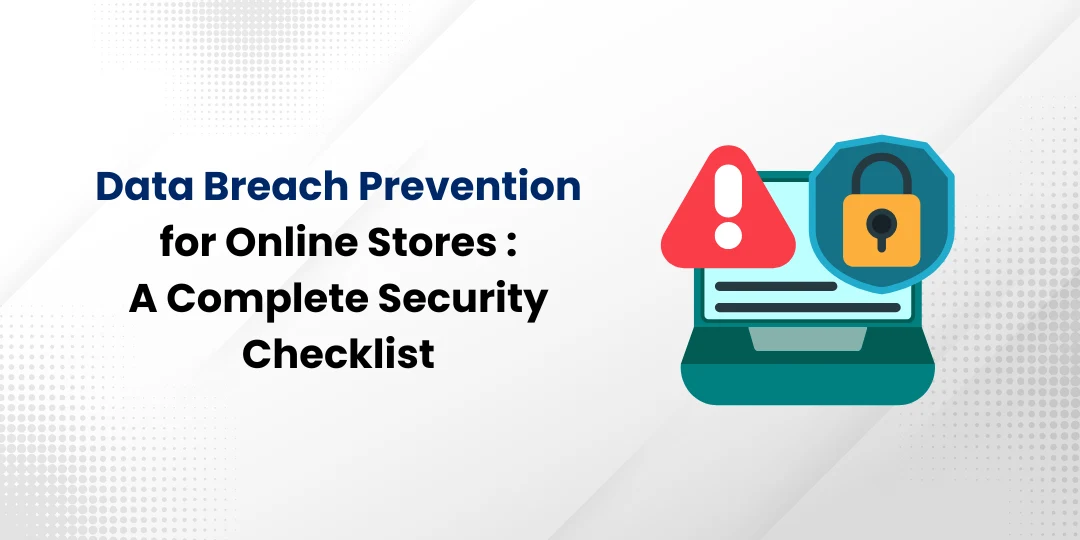Running an online store means you’re handling sensitive customer data every single day. Credit card numbers, personal addresses, phone numbers, and email addresses flow through your systems constantly, which makes your business an attractive target for cybercriminals. The good news is that with the right security measures in place, you can protect both your customers and your business from devastating data breaches.

The Real Cost of Data Breaches
When most business owners think about data breaches, they focus on the immediate financial impact. However, the true cost goes far beyond the initial incident response. A single breach can result in regulatory fines, legal fees, customer compensation, and lost sales that stretch on for months or even years.
More importantly, your reputation takes a massive hit. Customers who trusted you with their personal information suddenly question whether they can shop with you safely. Since trust is the foundation of any successful online business, this damage can be incredibly difficult to repair. Some businesses never fully recover from a major security incident.
Secure Your Website Foundation
Your website’s basic security setup forms the first line of defense against potential attackers. Start by ensuring your site uses HTTPS encryption across every single page, not just during checkout. This encryption protects data as it travels between your customers’ browsers and your servers, making it nearly impossible for hackers to intercept sensitive information.
Keep your website platform, plugins, and themes updated religiously. Outdated software contains known vulnerabilities that hackers actively exploit. Set up automatic updates whenever possible, and create a schedule to manually check for updates at least weekly. Remove any plugins or themes you’re not actively using, as these create unnecessary security risks.
Choose a reputable hosting provider that prioritizes security. Look for hosts that offer features such as automatic backups, malware scanning, firewalls, and 24/7 security monitoring. Your hosting environment is the foundation everything else builds upon, so this decision impacts your entire security posture.
Implement Strong Access Controls
Not everyone who works with your online store needs access to sensitive customer data. Create different user roles with specific permissions based on what each person actually needs to do their job. Your customer service team might need to view order details, but they probably don’t need access to payment processing settings or customer credit card information.
Require strong passwords for all user accounts and consider implementing two-factor authentication for anyone with administrative access. Password requirements should include a mix of uppercase and lowercase letters, numbers, and special characters. Since many people struggle to remember complex passwords, consider providing access to a business password manager.
Regularly audit who has access to what parts of your system. Remove access immediately when employees leave or change roles. Conduct these audits quarterly to ensure you’re not carrying unnecessary security risks from outdated access permissions.
Secure Payment Processing
Your payment processing setup deserves special attention since this is where the most sensitive customer data flows through your system. Use a reputable payment processor that handles PCI DSS compliance requirements, which reduces your direct responsibility for protecting credit card data.
Never store complete credit card numbers, security codes, or other sensitive payment information on your servers. Even if you think your security is bulletproof, storing this data creates unnecessary risk. Let your payment processor handle the secure storage while you focus on running your business.
Consider implementing tokenization for recurring payments or saved payment methods. This technology replaces sensitive payment data with non-sensitive tokens that are useless to hackers even if they’re stolen. The actual payment information stays safely with your payment processor.
Monitor and Maintain Security
Security isn’t a one-time setup task. It requires ongoing monitoring and maintenance to stay effective against evolving threats. Install security monitoring tools that can detect unusual activity, such as multiple failed login attempts, suspicious file changes, or unexpected data access patterns.
Set up automated backups of your entire website and database. Test these backups regularly to ensure they actually work when you need them. Store backup copies in multiple locations, including at least one off-site location that’s completely separate from your main hosting environment.
Create an incident response plan before you need it. This plan should outline exactly what steps to take if you suspect a security breach, including who to contact, how to preserve evidence, and how to communicate with customers. Having a clear plan helps you respond quickly and effectively during a stressful situation.
Protect Customer Identity Beyond Your Store
While securing your online store is crucial, you should also consider the broader identity protection needs of your business and customers. Implementing the best identity theft protection for business as recommended by Cybernews experts can provide an additional layer of security that extends beyond your website’s boundaries.
Business identity protection services monitor for signs that your company’s information is being misused across various platforms and databases. This early warning system can help you identify potential security issues before they become major problems.
Train Your Team
Your employees can be either your strongest security asset or your biggest vulnerability. Provide regular security training that covers topics such as recognizing phishing emails, creating strong passwords, and following proper data handling procedures.
Make security training engaging and relevant to each person’s specific role. Customer service representatives need different security knowledge than warehouse staff or marketing team members. Tailor your training programs accordingly to ensure everyone gets the information they need without overwhelming them with irrelevant details.
Stay Compliant with Regulations
Different regions have different data protection requirements, and non-compliance can result in significant fines. If you serve customers in the European Union, you need to comply with GDPR requirements. California customers are protected by CCPA regulations. Understanding and following these requirements isn’t just about avoiding fines as they also represent security best practices that protect your customers.
Document your security procedures and data handling practices. This documentation helps with compliance audits and also ensures consistency in how your team handles sensitive information. Regular compliance reviews help you identify areas where your procedures might need updates.
Taking security seriously from the beginning is much easier and less expensive than trying to retrofit security measures after a breach has already occurred. By following this checklist and maintaining vigilant security practices, you can build customer trust while protecting your business from the devastating consequences of a data breach.





